
Snowstorms are dangerous for small animals because they have a high chance of catching hypothermia.
©Bilanol/iStock via Getty Images
Winter weather can be dangerous for indoor and outdoor pets. The harsh wind, freezing temperatures, and precipitation can be so rough that animals seek shelter anywhere to survive. Large predators like coyotes and bears dig dens or find caves in which to stay warm, but small and medium-sized animals occupy any crevice into which they can wiggle.
A common place for animals to hide during the winter is inside car engines. Obviously, car engines are not the safest places, but the number of reported animals hiding inside cars emerges every year.
What makes car engines so attractive to small animals? Do they stay in other parts of the car? How much damage can an animal cause while hiding inside a car engine?
Gear up before the winter weather settles in and learn how and why animals hide in car engines.
What Animals Are Hiding in Car Engines
Depending on where you live, there can be a variety of animals hiding in your car’s engine. The most common animals to hide inside car hoods are:
Reasons Animals Hide in Car Engines
Warmth
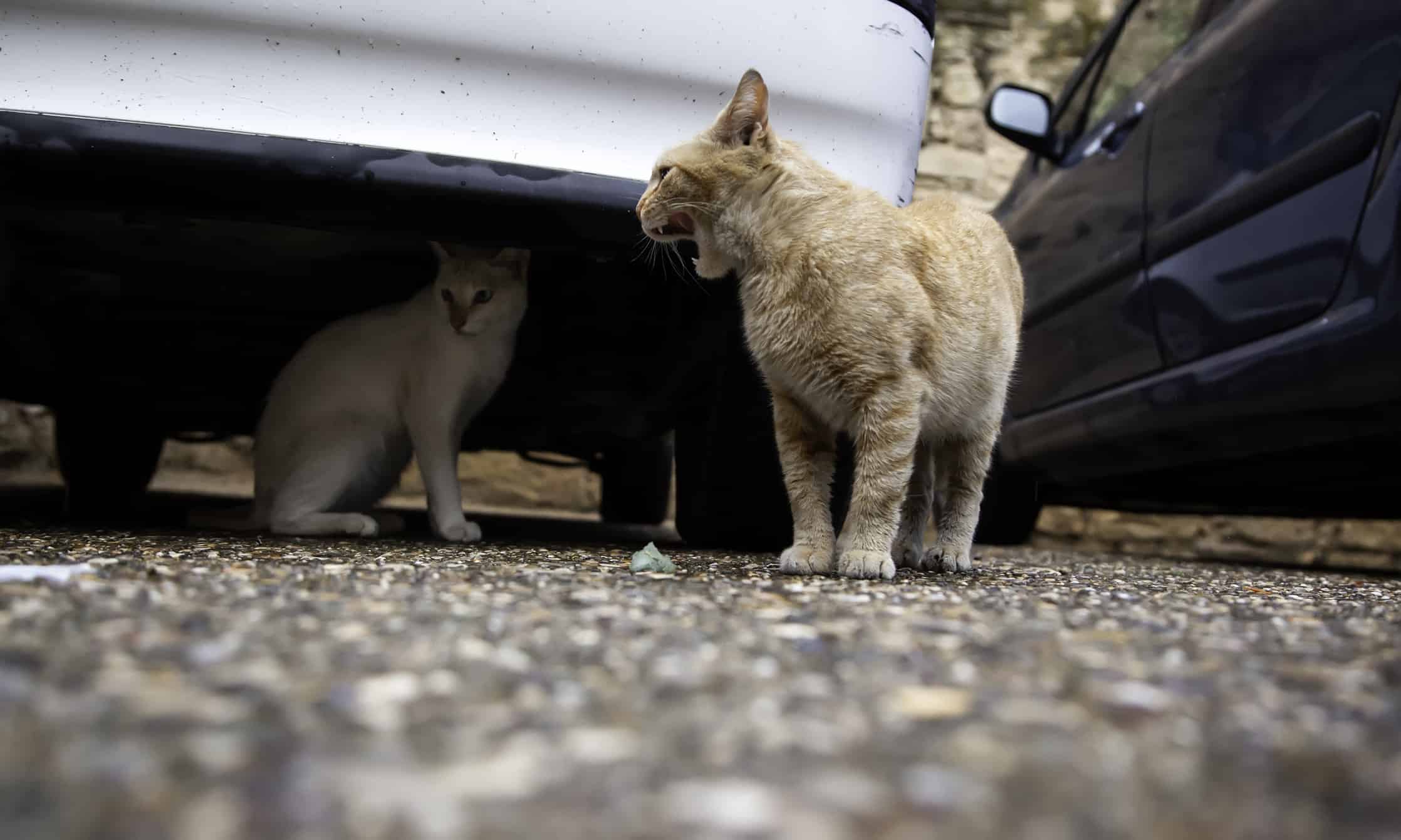
Stray cats often seek shelter under cars because the tight spaces provide good insulation.
©fotocelia/iStock via Getty Images
The primary reason animals hide in car engines is to stay warm. Winter weather can dip as low as 20 degrees Fahrenheit or lower, depending on location and climate conditions. These low temperatures are dangerous and even life-threatening for wild animals without a home for safety.
Humans use cars to commute to and from work daily. The engines stay warm for several hours after the car is shut off, making it a comfortable place to hide to avoid a snowstorm. Animals will not lie directly on the engine as it may burn their skin, but they nestle themselves close enough to benefit from the warmth.
Protection
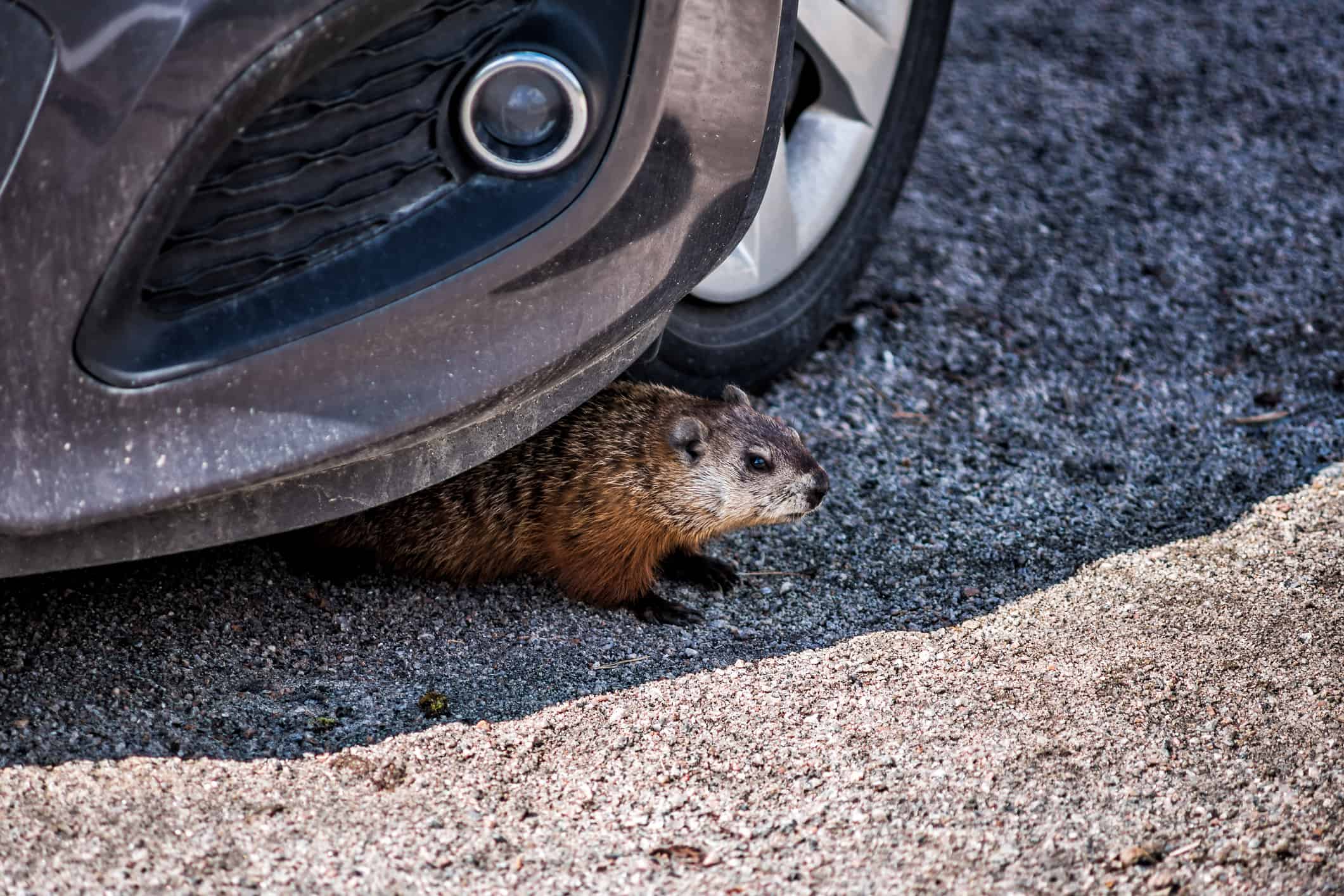
Rodents like mice and muskrats feel safe under cars where predators cannot reach them.
©ablokhin/iStock via Getty Images
Small animals like mice and squirrels are easy prey for every predator in nature. They are constantly seeking a safe place to hide, and car engines are an excellent option. The small spaces are difficult for predators to reach, there is plenty of room for a tiny animal to maneuver in case they are detected, and the smell of the car masks their scent.
Additionally, stray and feral cat mothers may hide a litter of kittens inside cars to protect them from predators while she goes out to hunt. Mother cats often leave their kittens in a safe location, hiding them in difficult-to-reach places so she can hunt in peace. Car engines are difficult for large predators to access, and the tight space provides kittens with extra warmth while their fur grows in.
Nearby Food

Food crumbs are commonly found on the floor of cars due to the fast-paced modern lifestyle.
©© Getty Images/The Image Bank via Getty Images
Wild animals are attracted to the smell of food, which humans keep plenty of in their cars. Some people keep snacks in their cars, while others have crumbs or dropped food on their floors. Regardless, animals can smell this food and will try their hardest to eat it.
Mice are excellent chewers, capable of chewing through wire, carpet, and wood. If they smell a fallen French fry on the car floor or some Cheerios in the passenger seat, they will climb up the wheels, navigate through the engine, chew their way into the cabin, and feast on the leftovers. After foraging for food, they will hide in the engine to rest and wait for more food to arrive.
Results of Animals Hiding in Cars
Damage to Car

Internal wiring is costly. It takes time for mechanics to inspect parts and find a solution.
©Venerala/iStock via Getty Images
One risk of animals nesting inside care engines is vehicle damage. Mice and rodents need to chew to keep their teeth short, and they will chew on anything to do it. Their teeth are small, but they can cause a lot of damage by chewing through several engine cables.
Depending on the severity of the damage, car owners may have to pay $600 or more to replace and rewire an engine. Some car insurance companies may offer “comprehensive coverage” which may cover the cost of animal damage. Otherwise, they will have to pay out of pocket.
Harm to Animals
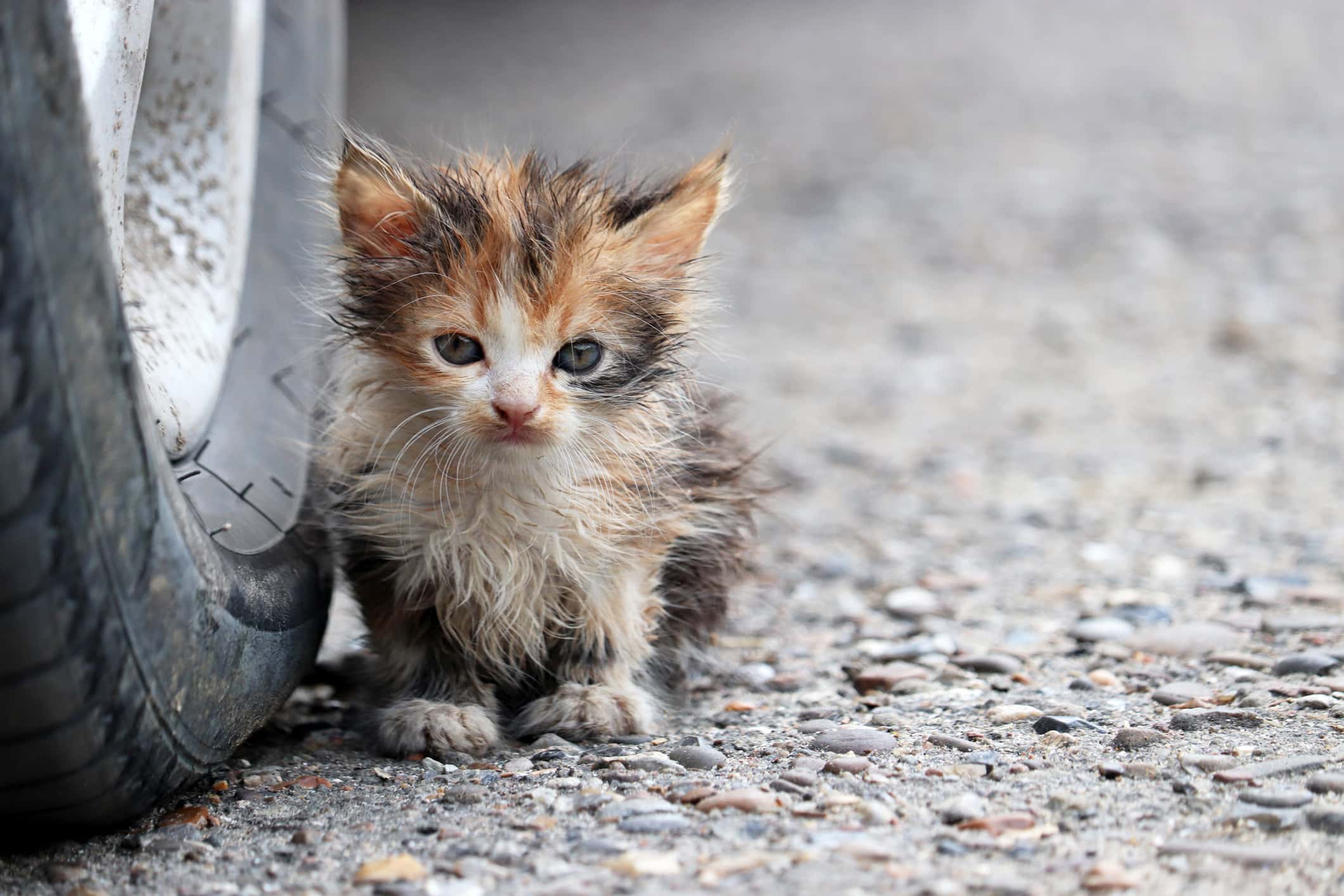
Kittens are born with hair, but they are vulnerable to cold temperatures.
©Oleg Elkov/iStock via Getty Images
Animals do not mean to cause any harm by hiding in the car engine. They are just looking for a place to hide from the bad weather. Car engines have a lot of moving and sharp parts which can severely injure the animals resting comfortably. Small kittens can be painfully ground up within the gears, which is an emotional tragedy, and a disgusting clean-up process.
Ways to Keep Animals Out of Cars
Honk Horn

Honking the horn is a quick and easy way of gauging if an animal is sleeping under the car.
©Rattankun Thongbun/iStock via Getty Images
To prevent such accidental tragedies, drivers should honk the horn before starting the car in the morning. Honking the horn will startle the animal awake, allowing them a chance to exit the engine. Drivers will hear a rustling sound within the engine, indicating something is camping under the food. Allow the animal a few minutes to escape and identify what animal is fleeing.
If it is a stray cat, double-check under the hood to make sure it is alone and not caring for kittens. Drivers may need to honk the horn a couple of times to make sure the animal has ample time and warning to flee.
Knock on the Hood

While removing show, drivers knock on the hood to see if any animal is inside.
©PavelRodimov/iStock via Getty Images
Knock on the hood of the car several times to wake up any sleeping animals. This works the same way as honking the horn, but it is less startling and more considerate to neighbors, especially for those of us who work early in the morning.
Knocking on the hood several times will gently startle the animal, forcing it to exit the engine. Drivers will know an animal is under the hood if they hear the sound of rustling against metal.
Investigate Car
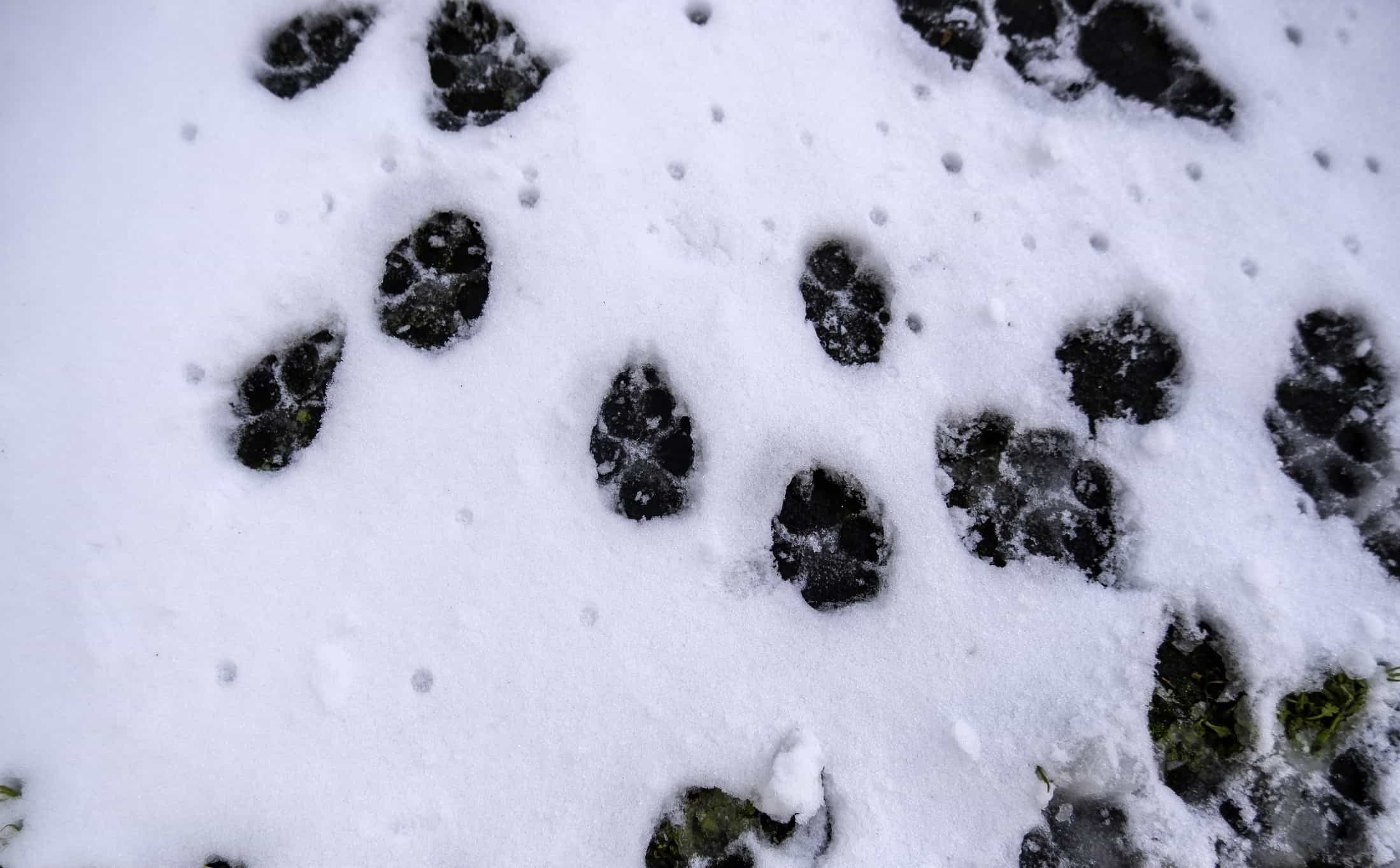
Animal tracks near or around the car are a good indicator someone might be around.
©fotocelia/iStock via Getty Images
Check other locations of the car beside the engine. Animals will also hide in the wheel well and undercarriage as alternative places to nest. Some raccoons are too big to fit inside car engines, so they squeeze themselves between the tires. The car provides insulation, keeping them warm overnight.
Honking the horn will chase the animals away, but some might need coaxing with more sound, a spray, or a stick to shoo them out of the car.
Make Shelters

Pet shelters can be simple wooden boxes or cheap dog houses available at pet stores.
©ovbelov/iStock via Getty Images
Offering animals alternative places to stay is a humane and positive way to help wildlife and keep your engines clear of critters. Make small shelters in the yard where little animals can hide for the night. Provide them with a clean source of water and an old blanket or towel for better insulation. Keep it away from any indoor pets in case the inhabitants are carrying fleas or ticks.
Seek Assistance
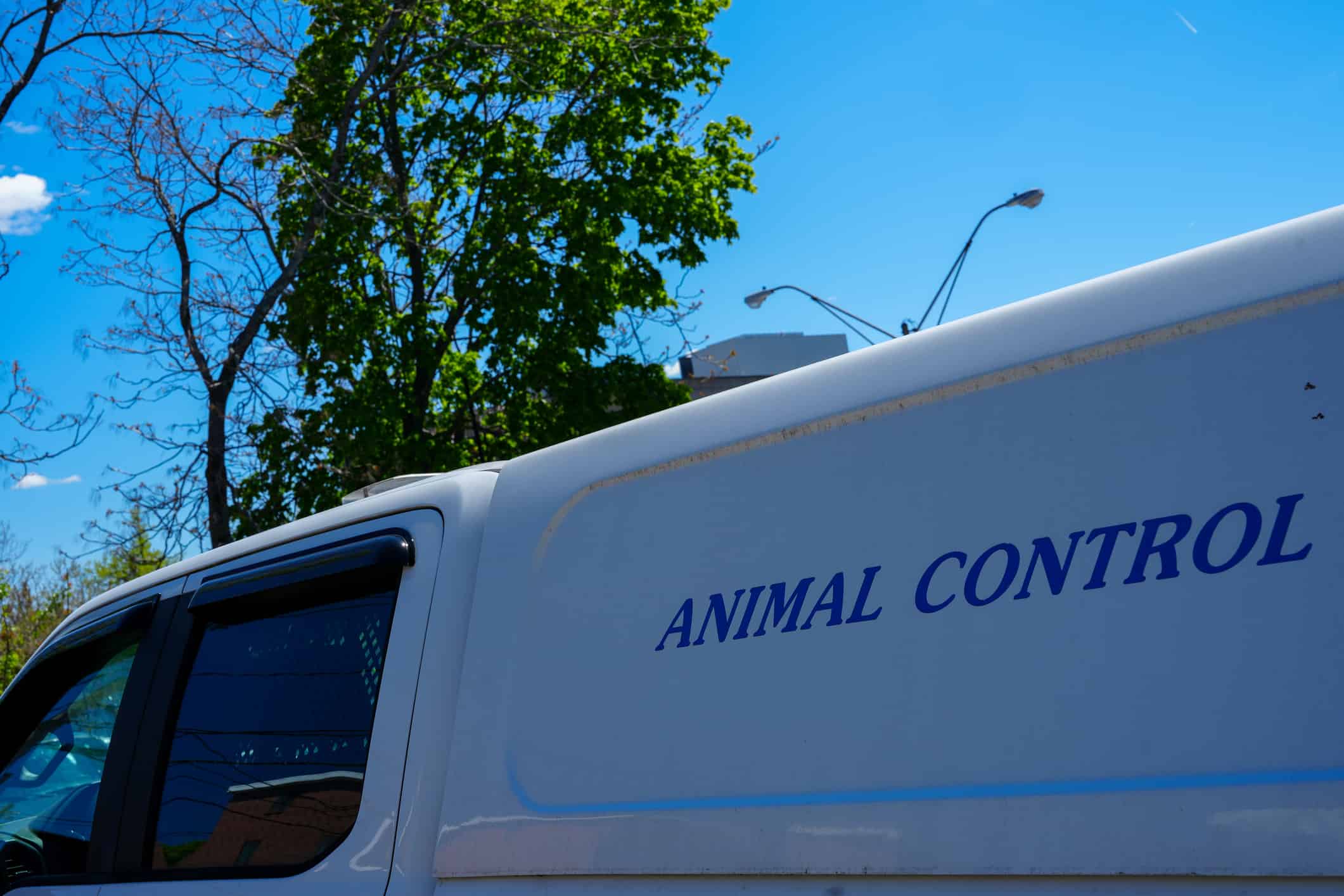
Every county and state has its own animal control officers to help remove nuisance animals.
©Lilia Moscalu/iStock via Getty Images
Typically, people should not engage with wild animals, as they are unpredictable. The best intentions of trying to free a trapped animal can lead to a bite. If a situation is too difficult or the animal refuses to leave the safety of the engine, call your local Animal Control to provide answers or assistance in removing the animal safely.
Dangerous Winter Weather Temperatures
Animals are more susceptible to poor weather conditions than humans because they walk directly on cold ground. Small dogs are also more likely to suffer from cold weather because they lose body heat faster than large dogs with double coats.
For context, the most dangerous temperature animals are vulnerable to are:
- 50 degrees Fahrenheit – risky for small and medium-sized animals with thin coats
- 45 degrees Fahrenheit – risky for small and medium-sized animals
- 40 degrees Fahrenheit – large risk of cold weather effects for small and medium-sized animals
- 30 degrees Fahrenheit – dangerous for small animals, especially with short hair
- 25 degrees Fahrenheit and below – extremely dangerous for toys and small-sized animals, medium-sized animals, and potentially large-size animals.
Dogs like Chihuahuas and Yorkies must limit the amount of time they spend outside because they may get frostbite. Large-breed dogs like huskies and mastiffs have a double-layered coat to protect them from cold weather.
Summary
Animals need shelter to survive the winter. Drivers must remain vigilant, even before entering the vehicle. Stray animals like cats, mice, raccoons, and opossums like to hide in car engines because it is warm. It is also a safe place to avoid predators and potentially gain easy access to food. Drivers should honk their horns and inspect the vehicle before starting the car. The hood, tires, and undercarriage are the most common places for animals to hide. Contact local animal control groups for assistance in removing persistent stragglers. Prevent them from returning by offering them a temporary winter shelter.
The photo featured at the top of this post is © mack2happy/iStock via Getty Images
Thank you for reading! Have some feedback for us? Contact the AZ Animals editorial team.







